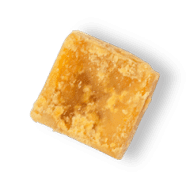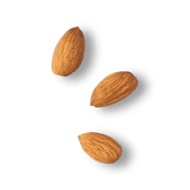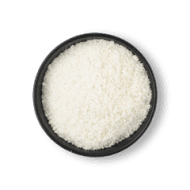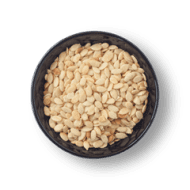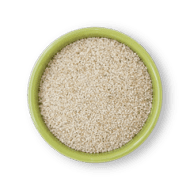Janmashtami and Panjiri: The great connection
Panjiri is a sweet dish that is commonly made in places like Punjab and Uttar Pradesh. The Panjiri recipe for Janmashtami is also common as it is considered a Falhari and can be had when you are fasting. Janmashtami is a festival that is celebrated to commemorate the birth of Lord Krishna. Every year, on the eighth day of the Krishna Paksha on Shravana month this festival is celebrated with great fanfare. On this happy occasion, many rituals including fasting are observed and Prasads are offered after preparing it dedicatedly during this auspicious day. The Panjiri is one of the most important as it is eaten during fasting. It is usually served with the Panchamrit which is an offering made using 5 ingredients including curd and Banana. The Panjiri ingredients are highly nutritious and made mainly from nuts, ghee, jaggery, and whole wheat flour hence it is served on the fasting day to remain energetic.
Types of Panjeeri
The Panjiri is a nutritious snack that can be had not just while fasting during festivals but also can be had as a sweet dish. If you are wondering how to make Panjiri or if the Panjeeri recipe is easy or not. Then it is easy to prepare and needs very little time to make it. There are various versions of this Panjiri recipe, some of them are:
Traditional Panjiri: This is the Panjeeri recipe that is used in the households of Punjab. To make this recipe, dry roast the whole wheat flour on low heat until it turns golden brown. Add ghee to this and continue roasting until the ghee is absorbed. Add dry fruits like cashews and almonds and turn off the flame. Add powdered jaggery or sugar and serve.
Gond Panjiri: Gond is a binding agent and is an edible gum used in many sweet dishes. Ayurveda considers this as an ingredient that can boost health and stamina. It is also helpful in treating Vitamin D deficiency and also prevents frequent infections. To make Panjeeri using Gond, fry it in ghee until it becomes transparent. Add grated coconut to heated ghee and roast it. To this add the Gond, chopped almonds, ginger powder, roasted wheat flour, and whisk. Switch off the flame, add powdered sugar or jaggery, and mix. Serve or store for future use.
Dry fruits Panjiri: In this Panjiri recipe, dry fruits are added. Roast wheat flour and keep aside. Add crushed Pistas, almonds, and cashews to it. Switch off the flame, add powdered sugar or jaggery to end the preparation. This is a great snack to have in winter as it gives the body heat.
Coconut Panjiri: This is a recipe for people who like the taste of coconut. To prepare this first make a sugar syrup of two-string consistency and add grated coconut and nuts and seeds of your choice. Mix well and pour to a greased plate.
Dhaniya Panjiri: Use nuts of your choice of Panjeeri ingredients along with lotus seeds and fry until it becomes golden brown. Keep this aside, in a pan roast coriander powder on a low flame. Transfer this to a bowl, add nuts, coconut, and powdered sugar. Mix well and enjoy. The use of Dhaniya is considered auspicious in this Panjiri Prasad recipe.
Tips and tricks to make the perfect Panjiri
Learning how to make Panjiri recipe is easy but to make it turn out delicious provided you follow the tips and tricks of making it perfect:
One of the most essential ingredients in the Panjiri Banane ki recipe is ghee. So you must use the best quality ghee which tastes and smells good. Check the shelf life of the ghee, it is ideal to use one which has a good shelf life.
The next thing is to be generous with it. Otherwise, it becomes hard and too dry to swallow.
While roasting the wheat flour ensure that it is done in low flame. Also, be patient while making the Aate ki Panjiri. If you use high flame or even medium flame then the ingredients will get burnt. Do not walk away while roasting it as it can get burnt easily. Even after the heat is turned off, roast for a few minutes to prevent burning the flour.
Use a thick bottomed pan with a handle to roast it. That way it gets even heat and there is less chance of burning ingredients if you use a slightly higher flame.
Be patient while roasting the ingredients as if you take it off early, it will retain the raw flavour, and if you overcook it becomes bitter.
While frying the nuts do not over roast it as you are removing all the nutrition from it and also gives out a different flavour.
Do not blend the ingredients for too long and do not forget to switch off the flame before adding sweetener. If you do so then it will lose its grainy consistency.
Check the state of the nuts before usage. Ensure that they are not old and do not smell or taste rancid.
Use powdered sugar or jaggery as that helps in mixing with the flour and gives an even sweetness.
Panjiri may be a winter food but it can be had in summer too. Skip the one with ginger powder as that generates heat in the body.
Why should you eat Panjiri?
Panjiri can be dubbed as a superfood as it is highly nutritious and provides many health benefits. It should be consumed as:
Postpartum food for new moms who are lactating boosts milk supply. It also helps in post-delivery healing and aids in getting back the energy lost due to childbirth.
Apart from lactating moms, it is also good for the general population. It creates heat in the body and is ideal for the harsh winters in North India.
It is a healing food especially for the elderly and those who have health issues. It boosts immunity, soothes aches and pain in sore muscles, and also lubricates the joints.
Other festival recipes to try
Types of Gyms by Cult.fit





